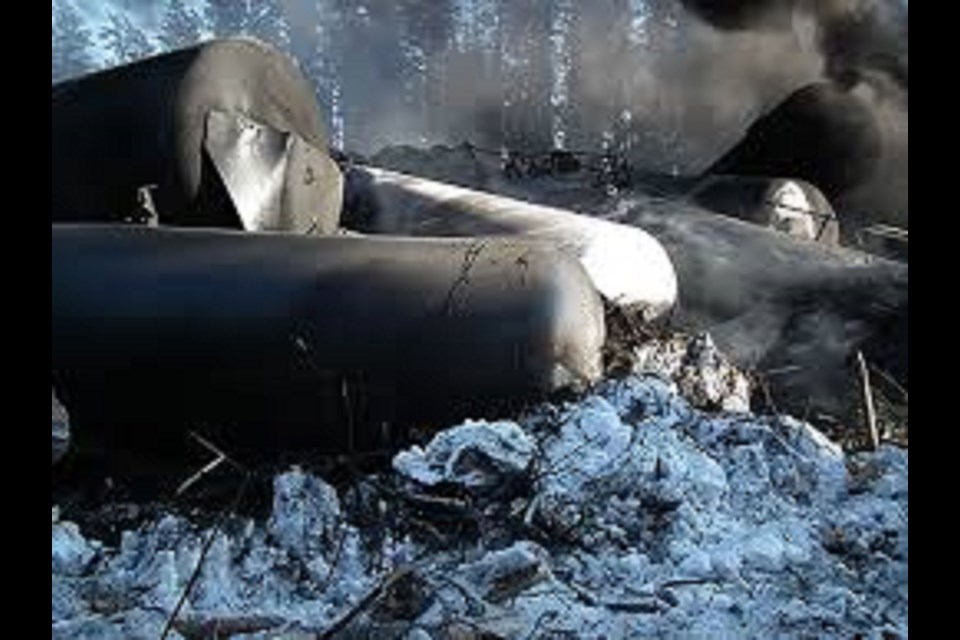The Transportation Safety Board of Canada (TSB) will hold a news conference on February 16, 2017 to make public its investigation report on the February 14, 2015 derailment and fire of a Canadian National Railway (CN) crude oil train near Gogama, Ontario.
The news conference will be at the Holiday in Sudbury, 1696 Regent Street, Georgian Room D. at 10:00 a.m. Eastern Standard Time.
Kathy Fox, Chair of the TSB, Rob Johnston, Manager, Central Region Rail Operations
Sylvie Dionne, Manager, Materials Analysis and Structures, will be on hand to give a summary of the findings and to answer questions from the media.
Click here for information about the report (R15H0013)
The event will be broadcast live on TSB’s YouTube channel.
According to Gogama Fire Chief Mike Benson, the TSB) has not yet met with the residents of Gogama, but a meeting is being arranged later in February with the community.
The news conference on Thursday in Sudbury is for media only.
Gogama Fire Chief Benson said he will not be going.
TimminsToday called Chief Walter Naveau of Mattagami First Nation to gauge his community’s response to the TSB’s upcoming news conference in Sudbury, on Thursday.
“The Transportation Safety Board will present their findings on the two or three factors that caused the CN derailment of crude oil tanker cars and the resulting fire,” said Fire Chief Benson in a telephone interview with TimminsToday.
The TSB describes itself as independent agency that investigates marine, pipeline, railway and aviation transportation occurrences. Its sole aim is the advancement of transportation safety. It is not the function of the Board to assign fault or determine civil or criminal liability.
On 14 February 2015, a CN crude oil train over a mile long (6,089 ft. in length), with only a two-man crew, was travelling eastward on CN's Ruel Subdivision near Gogama, Ontario. The train crew was composed of a locomotive engineer and a conductor. The train was hauling 100 tank cars, of which 68 carried petroleum crude oil and 32 carried petroleum distillates.
Just before midnight, while travelling at 38 mph, the train crew observed a fire about 10 cars behind the locomotives.The temperature at the time was -31°C and a slow order (speed restriction) of 40 mph was in place.
There were no injuries reported, and no evacuation was required. The crude oil was allowed to burn. All fires were extinguished by 20 February 2015.
Incredibly, just three weeks later, a second derailment occurred along the same CN main line tracks a few kilometres to the east.
A report on the second derailment is still pending.
In the second derailment and fire, another CN crude oil unit train travelling eastward on CN's Ruel Subdivision near Gogama of similar length (more than a mile long) and carrying 94 tank cars, travelling at 43 mph, derailed and a fire broke out immediately with what the crew called a fireball.
The second derailment took place on a bridge over the Makami River. All fires were extinguished by 10 March 2015.
The inspection of the site found that the 6th and 7th cars derailed prior to crossing the bridge and as a result it tore apart the bridge The cars rolled down the east embankment and its bottom outlet valve broke spilling crude oil into the Makami River.
According to the TSB initial survey of the derailment site, two of the cars were submerged in the river, and three cars were partially submerged in the rive.
Many of the damaged rail cars spilled crude oil which ignited into a fire that destroyed what was left of the steel rail bridge. About 700 feet of track was destroyed.
Both the Mattagami First Nation and the community of Gogama have been critical of CN’s handling of the cleanup. They feel more must be done to remove contaminated sediment from Makami River.
CN's cleanup has been criticised as insufficient by Dr. David Suzuki who visited the site of the second derailment and urged CN to remove the contaminated sediment from the river.
CN announced in their newsletter that it removed some sediment from the site of the second derailment in their December Newsletter.



